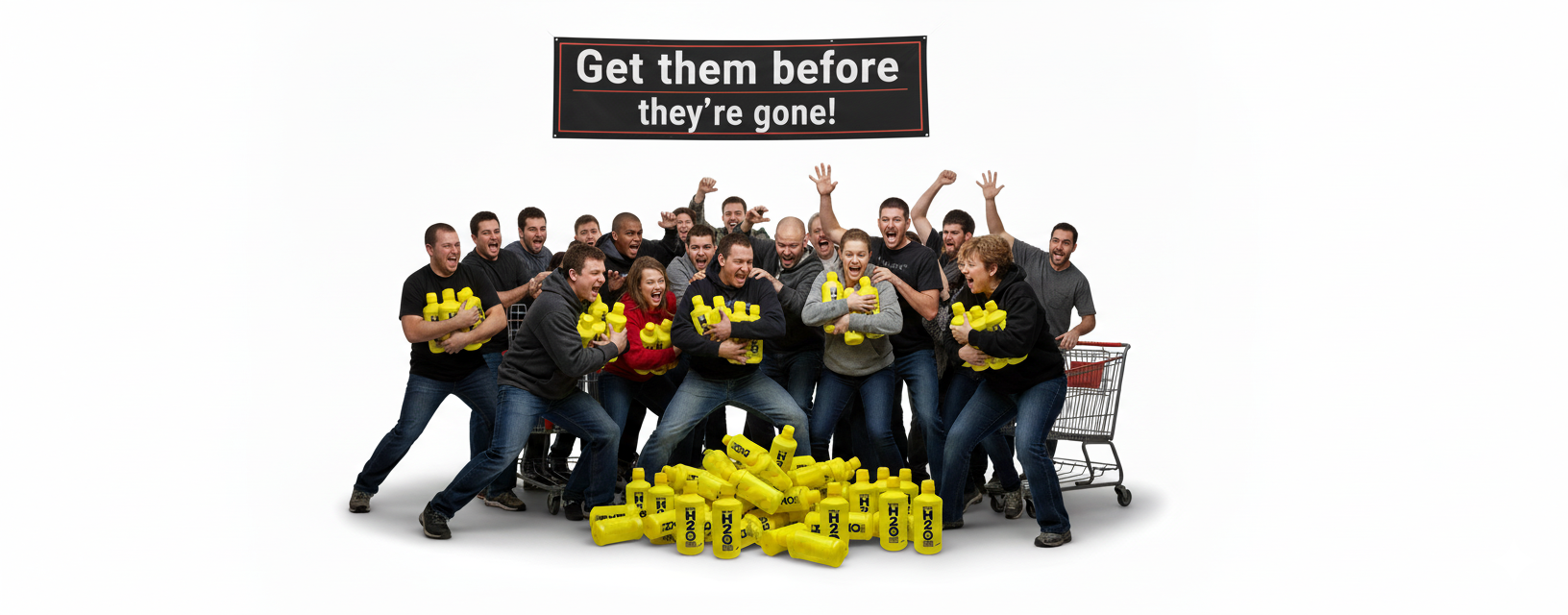
Buy Emergency Drinking Water Before It's Gone
Emergency Water Storage: Your Lifeline When Disaster Strikes
Having emergency drinking water stored is critical for survival. When crisis hits, you don't want to be scrambling for clean water.
Let me show you exactly how to secure your water supply the right way.
How Much Emergency Water Should You Store?
The basic rule is one gallon per person per day. Plan for at least a 2-week supply.
- Drinking: 1/2 gallon daily
- Cooking: 1/4 gallon daily
- Hygiene: 1/4 gallon daily
Best Storage Options for Emergency Drinking Water
Ready H2O Emergency Drinking Water comes in sturdy containers designed for long-term storage. These are made specifically for emergency preparedness.
Key benefits:
- 5-year shelf life
- BPA-free containers
- Easy to transport
- Space-efficient storage
Water Treatment Solutions
Having a reliable water filter is essential. The Katadyn KFT Expedition Microfilter removes 99.9% of bacteria and protozoa.
For whole-house protection, consider the WS Smart Whole House Water Filter.
Your emergency drinking water supply is your lifeline during disasters. Start building your storage today.
When it comes to emergency drinking water storage, proper planning goes beyond just filling up a few containers. Let's explore the advanced strategies that could save your life.
Advanced Water Storage Methods
While basic storage is essential, implementing multiple backup systems provides true water security. The AquaViable AV-5 Atmospheric Water Generator creates drinking water from air moisture - perfect for long-term sustainability.
- Use food-grade containers only
- Store in cool, dark locations
- Rotate supply every 6-12 months
- Keep containers elevated off concrete
Water Purification Systems
Installing a Crystal Quest Eagle Whole House Filter ensures clean water throughout your home even during emergencies.
- Removes sediment and particles
- Eliminates harmful bacteria
- Improves taste and odor
- Protects plumbing systems
Emergency Water Collection
The Gravi-Stil Survival Water Distiller lets you purify water from virtually any source.
- Collect rainwater in food-grade barrels
- Install water catchment systems
- Map local water sources
- Store portable collection containers
Remember, emergency drinking water preparation requires ongoing maintenance and multiple backup systems for true security.
Ensuring Water Security: Emergency Supply Rotation and Testing
Maintaining your emergency drinking water supply isn't a one-time task. The key to true water security lies in creating a system that ensures fresh, safe water when disaster strikes.
Let's look at what most preppers overlook but could make all the difference in a crisis.
Testing Your Emergency Water Supply
Regular testing of stored emergency drinking water prevents unpleasant surprises when you need it most.
- Check for clarity and odor monthly
- Use water test strips quarterly to verify safety
- Inspect containers for leaks, cracks, or bulging
- Document test dates on container labels
- Test both commercial and self-stored supplies
The WS Smart Whole House Water Filter provides continuous monitoring of your home's water quality - giving you peace of mind that your emergency reserves remain pure.
Strategic Water Storage Locations
Don't keep all your emergency drinking water in one place. Strategic distribution throughout your property creates redundancy and accessibility.
- Primary storage in temperature-controlled basement/pantry
- Secondary supply in garage or shed (freeze-protected)
- Vehicle emergency kits with individual bottles
- Hidden caches in waterproof containers
- Workplace/commute supply for extended emergencies
For truly mobile water security, the Katadyn KFT Expedition Microfilter allows you to purify water anywhere, serving as backup to your stored supplies.
Creating a Water Rotation Schedule
Even with long-shelf-life options like Ready H2O Emergency Drinking Water, establishing a rotation system ensures you're never caught with expired supplies.
My quarterly water rotation system:
- Label containers with purchase and rotation dates
- Set calendar reminders for rotation schedule
- Use oldest water for plants/cleaning before replacing
- Maintain inventory spreadsheet tracking volumes/locations
- Replace 25% of supply quarterly for freshness
Teaching Family Water Protocols
Your emergency drinking water plan is only as strong as your family's understanding of it.
- Conduct quarterly family drills on water access
- Create simple emergency water usage guidelines
- Teach basic water conservation techniques
- Establish clear roles for water management
- Practice using filtration and purification equipment
During emergencies, the Gravi-Stil Survival Water Distiller can be a lifesaver, but only if everyone knows how to operate it safely.
Common Questions About Emergency Drinking Water
How can I tell if my stored emergency water has gone bad?
Look for cloudiness, floating particles, unusual odor, or strange taste. If you notice any of these signs, it's best to replace your emergency drinking water immediately.
What's the best container for DIY water storage?
Food-grade plastic containers specifically designed for water storage are ideal. Avoid containers that previously held chemicals or non-food products, as they may contaminate your emergency drinking water supply.
Can I store emergency water outside?
While possible, outdoor storage exposes water to temperature fluctuations and UV light that can degrade containers and affect water quality. If outdoor storage is necessary, use UV-resistant containers and check them frequently for integrity.
How much water do I need for my pets during an emergency?
Plan for approximately 1 ounce of water per pound of body weight per day for dogs and cats. For example, a 60-pound dog would need about 60 ounces (nearly 2 quarts) of emergency drinking water daily.
Is bottled water from the store sufficient for emergency preparedness?
While convenient, commercial bottled water typically has shorter shelf life than dedicated emergency drinking water products. It can be part of your strategy but should be rotated more frequently and supplemented with longer-term storage solutions.
Remember, your emergency drinking water supply is truly your last line of defense when disaster strikes. Creating redundant systems with proper testing, rotation, and family protocols ensures you'll have this essential resource when you need it most.


Leave a comment